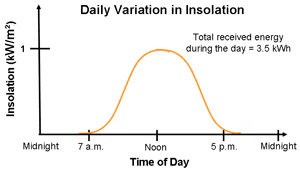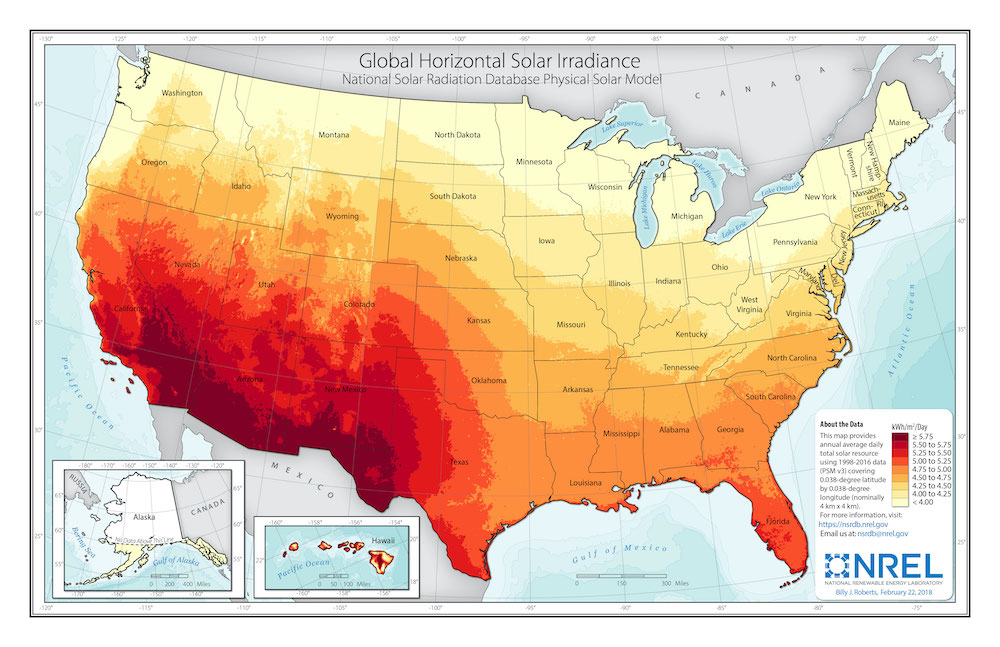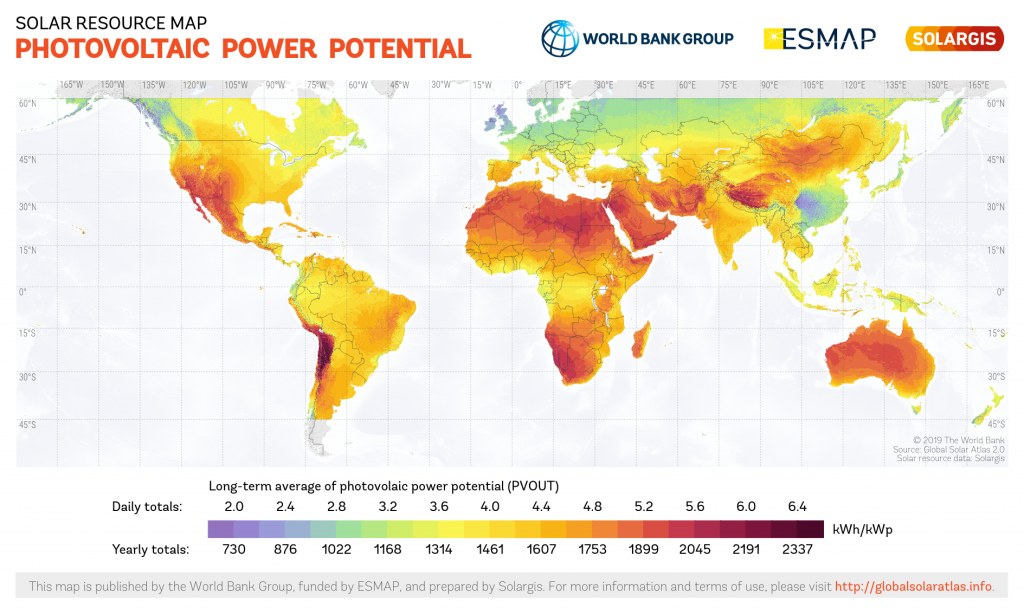If you’re new to solar, you need to know how to calculate sun hours per day. This will help you find out the amount of solar power you can get in your area. Sun hours are basically the number of hours in a given day that you can expect to get useful solar energy. You can generate power as long as the sun is up. However, not every hour is 100% productive like 12 o clock. You have to know the available sun hours in your region to figure out how many solar panels you need.

As you can see in this chart, solar panels produce the most power around noon, and as expected they taper off towards the end of the day. If you have ever been to Arizona, or as I like to call it, America’s oven, then you know that there’s a reason they lead the USA in sun hours per day. Some places in Arizona are sunny 90% of the 12 hour day. By contrast, you probably can guess that Minnesota is not going to have nearly as many sun hours in a given day, that is if your panels aren’t covered in 2 feet of snow. With this map below, you can see which parts of the US have the most sun hours. And if you’re going to build a solar system in the United States, then look no further than to this chart for the information on each state’s solar “insolation”. Insolation just means the amount of solar energy spread out through the day in sun hours.

Sun-Hours in Alaska and Hawaii
What if you’re in Alaska or Hawaii though? If you’re in Hawaii, you probably have other problems on your hands. Hawaii makes it difficult to sell back to the grid, and shipping panels to Hawaii is very costly. It can be done, though. Alaska also has periods in the year when there are only 4 hours of sunlight in a given day. Even in those hours of sunlight, it’s so far north that the sun’s energy is not as strong. For this reason, you don’t see many homes with solar unless it’s for low power devices.
Calculate Sun Hours per Day for Countries Outside the USA
There are plenty of other countries with very good solar insolation like India, Australia, and Saudi Arabia. You could probably find a map of your own particular country’s sun hours just like the map we have of the USA. However, if you can’t find a map or you want the exact calculation, there are a couple of different tools you can use. As you can see, the map is not based upon latitude alone, there are several other factors that determine the solar insolation of an area. This also assumes you have a clear and open area for solar panels on your roof or in your yard. Use this map for an average of the sun hours in a given location in the world :

(Alternative) Calculate it Online
We can use the calculator from Keisan to calculate the sun hours of a given area. We will use Tokyo as a simple example. You can see here that we can produce the most power at 12 o clock just like anywhere else. However the chart also states that we will get 14 “sunny hours”. This won’t really work for traditional “peak sun hours” because a peak sun hours is calculated by the amount of time per day you can generate 1000 watts per square meter. Long story short, this is when solar panels can produce the maximum power that they are rated for.
However with some simple math we can see that we get around two hours of full power, and about two hours of 3/4 power and so on. If you add the blocks together you find it’s around 5 peak sun hours. This is pretty useful, but it’s also fully based on theoretical numbers and not based on your real location. This is also hard to use because it requires complex calculations.

Don’t Forget about Shading
One of the most overlooked areas of building a solar system is the shading. Many people forget about shading analysis. You can find out the specific shading of a particular area by looking at a solar pathfinder tool. This involves using a reflective sphere that can show you the sun’s path over your area. If you do this before placing an array you can get the most out of your array.
